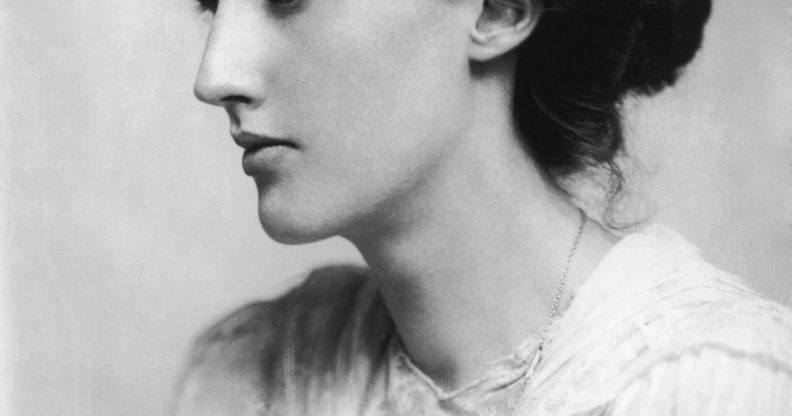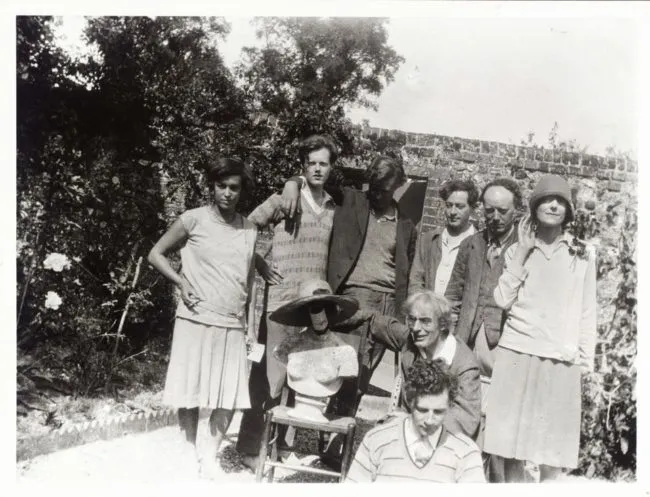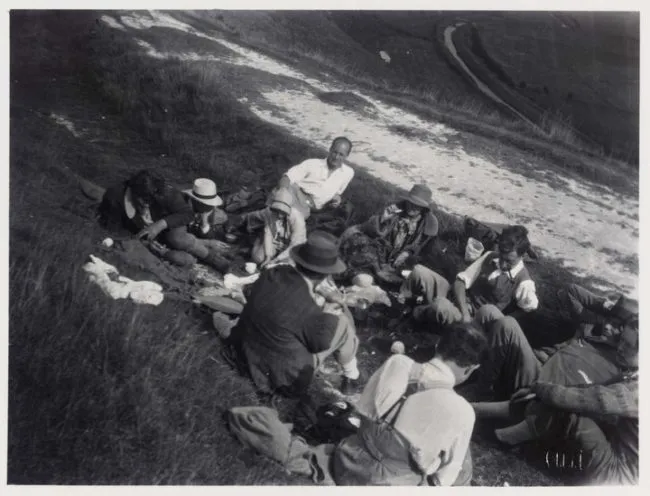Here’s how Virginia Woolf and The Bloomsbury Group changed LGBT rights forever

English novelist and critic Virginia Woolf (1882 – 1941), 1902. (Photo by George C. Beresford/Hulton Archive/Getty Images)
English novelist and critic Virginia Woolf (1882 - 1941), 1902. (Photo by George C. Beresford/Hulton Archive/Getty Images)
How is it that decades after the Bloomsbury Group – or Bloomsbury Set – existed, the British public are still so entranced by them?
Was it because they were wealthy, artistic and glamorous?
Was it because there was a dark undercurrent of unhappiness behind the bohemian lifestyle and the privilege that eventually lead to author Virginia Woolf filling her pockets full of stones and drowning herself in a neighbouring river?
It maybe all those things. But indisputably, part of the interest comes from the brave way each member of the Bloomsbury Group rebelled against their austere Victorian upbringings.
How they audaciously lived their own lives as outsiders of the norm – emotionally, intellectually and of course sexually – paving the way to a more progressive and free society.
The intellectuals, artists and freethinkers that formed The Bloomsbury Group helped with monumental shifts in the LGBTQ rights movement.
Related: Teacher quits after reading homoerotic Allen Ginsberg poem in class
What was the Bloomsbury Group?

Vanessa Bell, Duncan Grant, Roger Fry. Tate.
Most people best know the Bloomsbury Group as the collection of idiosyncratic, intellectual metropolitan elites, who met in the home of artist Vanessa Bell to discuss literature, art and philosophy.
Members of the group were vast and sprawling, with key members that changed before and after the First World War. Major players in the group included Vanessa Bell and her sister Virginia Woolf, the art critic Clive Bell, publisher Leonard Woolf and the economist John Maynard Keynes.
The group started as a collection of friends living near to Bloomsbury in London, many of whom had known one another from their time at Cambridge, and who would join together for scintillating conversation and sometimes sexual experimentation.
The Bloomsbury Group were literary renegades who played a key role in exposing the LGBT spectrum to the close-minded Victorian upper classes.
One of the first recorded stories about gender fluidity
In October 1928, Virginia Woolf published her novel Orlando: A Biography, an energetic story inspired by the history of Woolf’s lesbian lover, the poet Vita Sackville-West, and is one of the first recorded stories about gender fluidity.
The book tells of a poet who undergoes a sex change, transitioning from a man to a woman, and then lives for generations, encountering important figures throughout history – including other characters who change between the sexes and dress as both men and women.
Related: Massachusetts schools to give LGBT history and health lessons
Today the book is among Woolf’s most popular works, and is considered a work of feminist fiction and a progressive LGBT novel.
Alongside novels such as Alan Hollinghurst’s The Line of Beauty and Sarah Waters’ Fingersmith, Orlando is regularly on the list of monumental books with LGBTQ+ representation.
Orlando is regularly discussed not only as an extraordinarily progressive book for the time (sex between two men continued to be a crime until 1962 and the word ‘transsexual’ was not coined until 1949), but as one of the most charming love letters ever written.
Sackville-West’s son Nigel Nicolson once said of the book: “The effect of Vita on Virginia is all contained in Orlando, the longest and most charming love letter in literature…”
“In which she explores Vita, weaves her in and out of the centuries, tosses her from one sex to the other, plays with her, dresses her in furs, lace and emeralds, teases her, flirts with her, drops a veil of mist around her.”
The Bloomsbury Group and LGBTQ rights

The Bloomsbury Group picnicking (Tate)
The Bloomsbury Group didn’t just write about LGBTQ+ ideas, they lived them. The kind of free-thinking bohemia they created influenced the course of history.
Before the First World War, most of the Bloomsbury Group’s LGBT activity was confined to certain key players, including painter Duncan Grant (the man occasionally known as the ‘Matisse of Britain’) who had relationships with Bloomsbury Set members Lytton Strachey and John Maynard Keynes.
He also had relations with Vanessa Bell who had his child, Angelica.
Grant and Bell eventually settled into an open relationship that allowed Duncan to have affairs with several other men including the British writer David Garnett – the man who would one day go on to marry Grant’s daughter Angelica, and have four daughters with her.
Related: Feature: Transgender people in film and literature
Grant’s belief in his right to love whoever he chose, and to express himself frankly, influenced much of his work, which he filled with seductive male nudes and homoerotic compositions.
Declaring that his moral code stemmed from the Regency period – before the conservative Victorian era when sexual mores were more accepted – Grant was known to say that one should “never be ashamed.”
He and his art were accused at the time of having a ‘degenerative’ effect on those students who studied him.
The economist Maynard Keynes began his sexually active life with relationships almost exclusively with men.
Much is known about Keynes’ relationships whilst he was at Eton and Cambridge thanks to his diaries, kept from 1901 to 1915 that collated many of his sexual relationships with men.
Keynes helped to dissolve the conservative Victorian attitudes of the time, including those of intellectual group The Cambridge Apostles, with the help of his friend and fellow writer Lytton Strachey.
Naturally, the Bloomsbury Group were not alone in pushing the boundaries about what was acceptable, and in exploring LGBTQ+ issues through art and literature.
They were, after all, operating a few years after the death of Oscar Wilde, and Orlando was published the same year as the inflammatory lesbian novel The Well of Loneliness by British author Radclyffe Hall.
Criticisms
It has been argued that the Bloomsbury Group was protected from the plight of LGBT+ minorities by their glamour and class status.
Nonetheless, the choices made by members of the Bloomsbury Group to love who they chose and life how they liked, coupled with the necessarily admirable intellectual, artistic and literary advancements made by the group, contributed to the seismic shift in British attitudes towards LGBTQ rights and in the art and literature of the time.
During a discussion in 1949, the architect Frank Lloyd Wright said that “this movement which we call modern art and painting has been greatly, or is greatly, in debt to homosexuals.”
He didn’t mean it as a compliment, but we can choose to take it as such.
Marcel Duchamp said: “I believe the homosexual public has shown more interest [in] or curiosity for modern art than the heterosexual.”
We have, in some small part, the Bloomsbury Group to thank for that.

